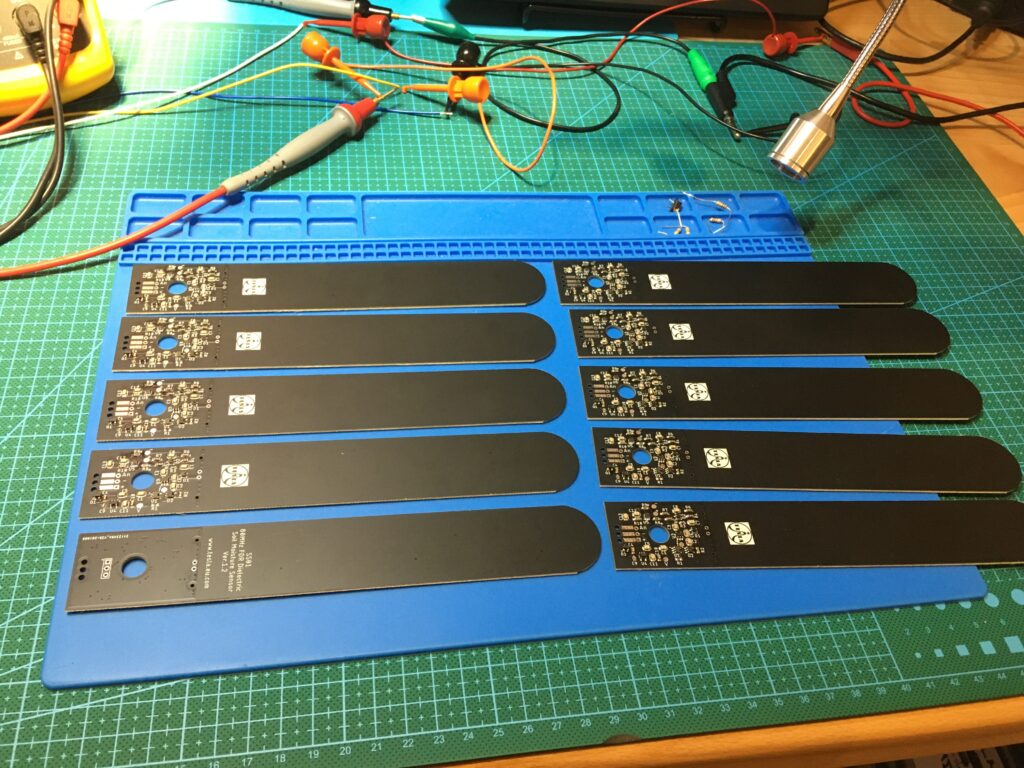Previous post described our reasons for developing Dielectric Soil Moisture Sensor. Here we would like to share some thoughts about the probes of these sensors.
In general, any two metal bars or PCB traces will work with the same oscillator. What will change with each setup is the probe’s capacitance and sensitivity. The sensitivity can be balanced to desired level with an analog OpAmp amplifier.
One thing is for sure: it is worth to build a development platform like we did. One can see the different probe’s behavior and fine tune the final circuit values. We have learned that our many combinations are all useful for various applications. Sometimes you need a short probe; sometimes sharp one for hard soils; or, like in our case, you need one for a shallow trays to grow Microgreens.

It is all up to you – they will all work. We recommend to do a lot of comparison testing. All sensors should be indicating fairly same analog values at various temperatures and with various power supply voltages. We have ended up using a 4-layer PCB and burying the sensing traces on the internal layers. The decision was mostly aesthetical, we wanted to avoid scratching the PCB mask layer and exposing the trace. The truth is we did not have to worry too much, as we have build a lot of sensors with traces on the top layer and they were fine even after prolonged use.
You might be wondering about the resulting capacitance of these PCB traces: all our combinations resulted in similar values ranging between 10pF and 100pF.
Now that we have the Capacitive Soil Sensor oscillator, amplifier and probes working and fine tuned, it is time to think of the sensor output. As it stands now the output is analog, with dry sensor output of 0.2 Volts and the wet sensor output of 1.5 Volt and anything in-between. That is not good enough for our application – each TESLA Microgreen Stand needs to measure 16 independent trays and control watering them separately. In addition, there can be more than just one stand, requiring the controller to communicate to many sensors.
It looks like it is time for another post to talk about various available systems based on digital communication and choose one of them.

